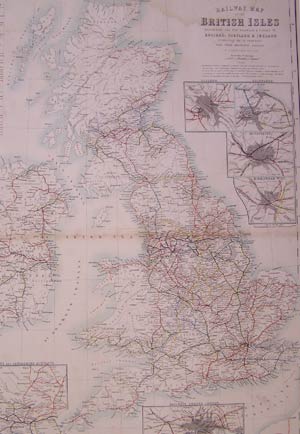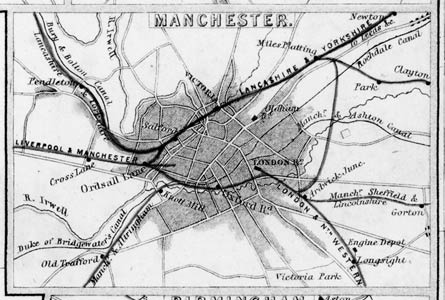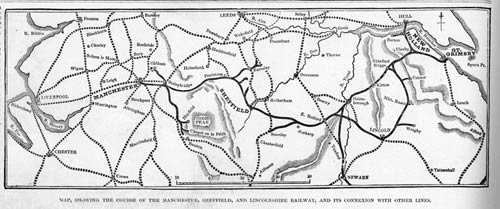|

NOTES ON ISSUE 8: HISTORICAL GLOSSARY
PART 2 OF 2
she was so quick in pouncing on
a disengaged coach, so quick in darting out of it, producing
her money, seizing her ticket, and diving into the train, that
she was borne along the arches spanning the land of coal-pits
past and present as if she had been caught up in a cloud and
whirled away
Mrs. Sparsit's impromptu train journeys
in this episode show the degree to which local as well as national
travel had been speeded by the vast growth of the railways in
the first half of the nineteenth century. Throughout this chapter,
the plot of Mrs. Sparsit's pursuit of Louisa depends on the
frequent availability of fast local transit.
A mid-nineteenth-century map drawn by J. Bartholomew, Jr., "Railway
Map of the British Isles exhibiting all the Railways & Canals
in England, Scotland & Ireland completed or in progress with
their respective stations," shows the extent of the railway
network in Britain at around the time Hard Times was
written.

Click
on image for larger view
The following detail from the same map shows
the extent of the local railways surrounding Manchester.

A few years before the writing of Hard
Times, on April 15, 1848, the Illustrated London News
printed an illustration of the railway network in the same region,
extending from Liverpool and Manchester to Sheffield to Lincolnshire.

Click
on image for larger view
the electric wires which ruled
a colossal strip of music-paper out of the evening sky
Electric wires lined the railways as far north as Glasgow by
1840; after the mid-1840s, telegraph poles became more and more
common as well. Thus electrical lines were a common sight from
train windows at the time of the novel's composition.
The national dustmen
That is, Members of Parliament. For more on the comparison of
Parliamentary work to dust-heaps, see note above.
|

